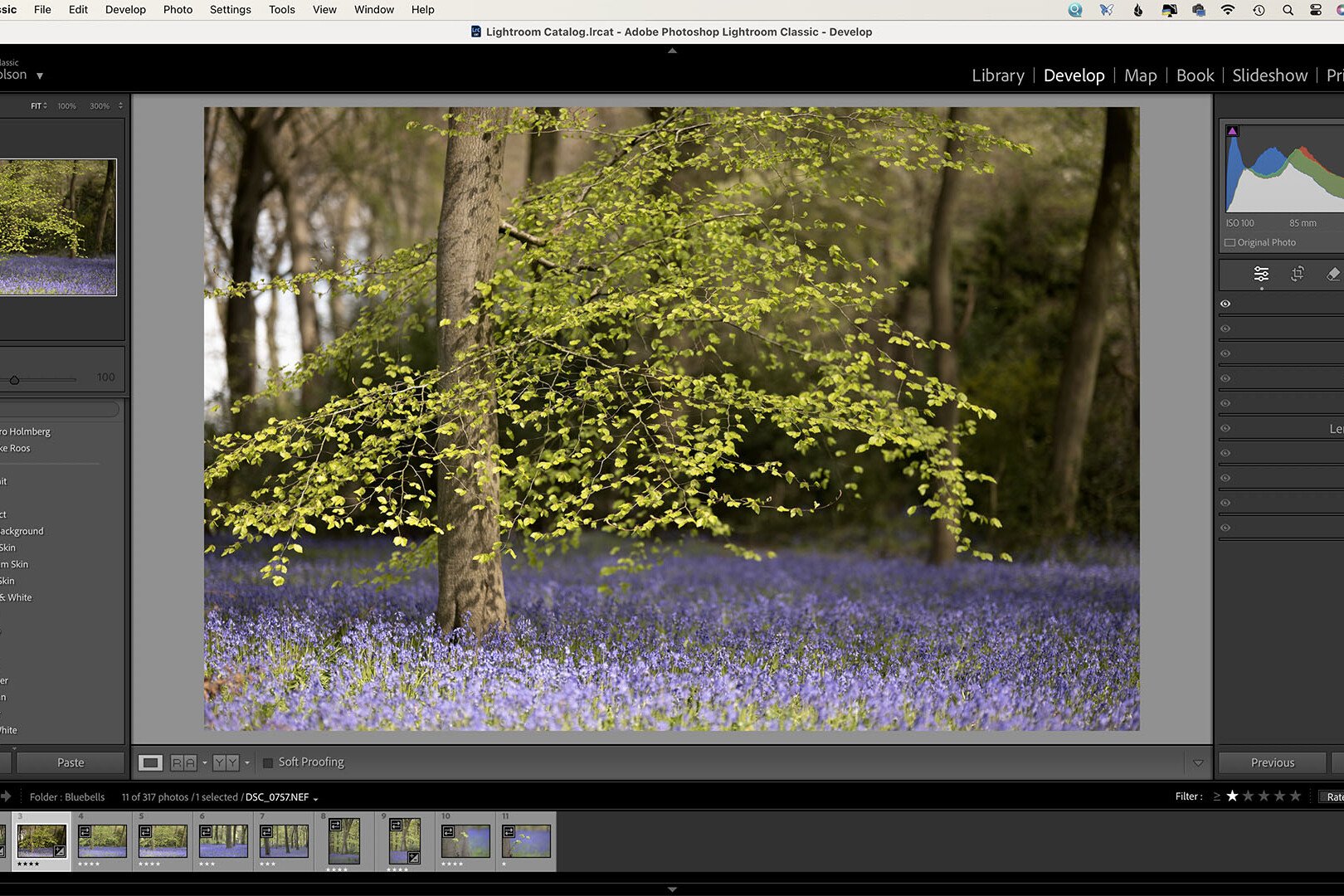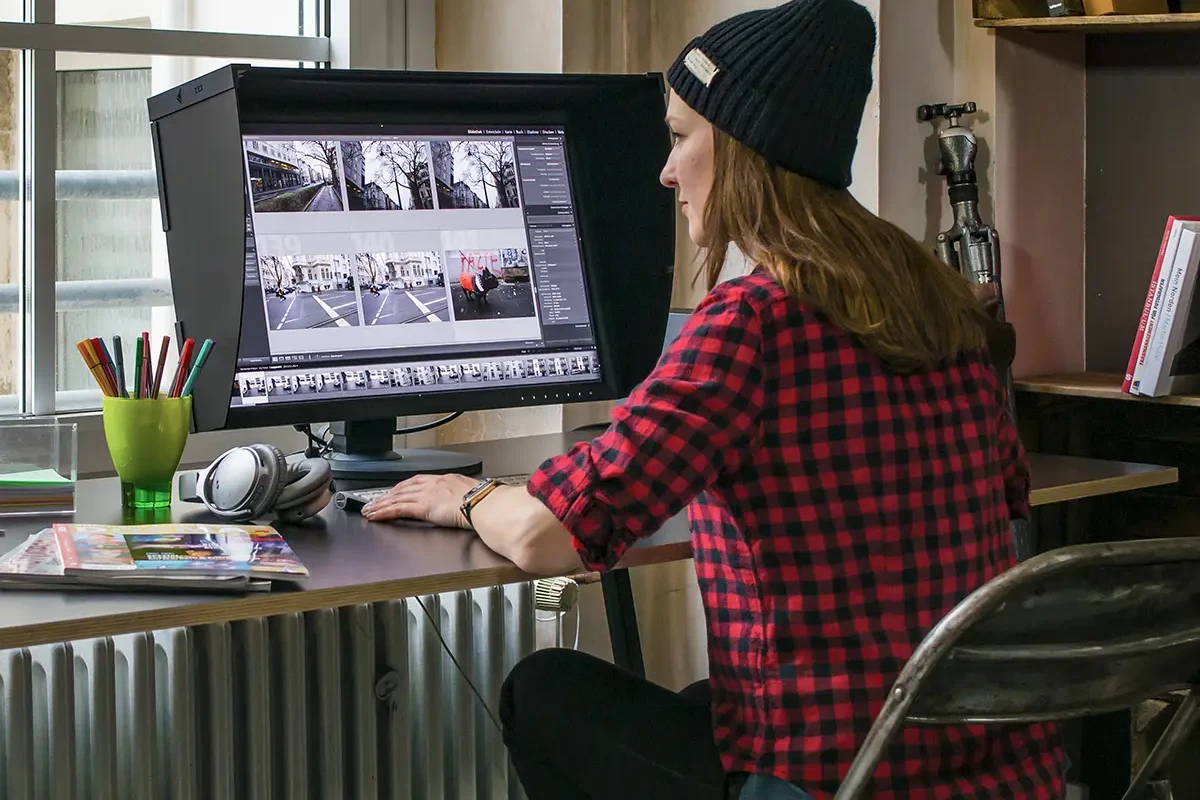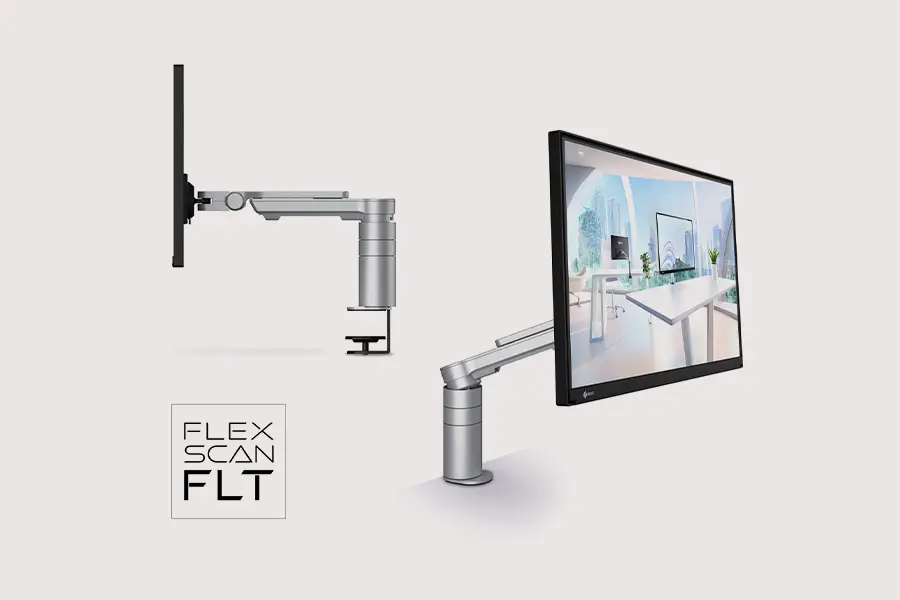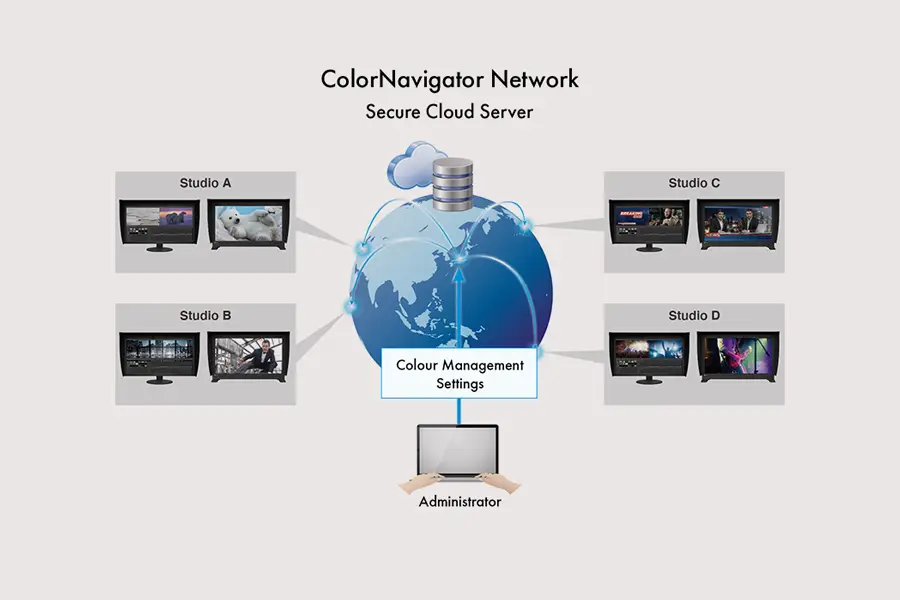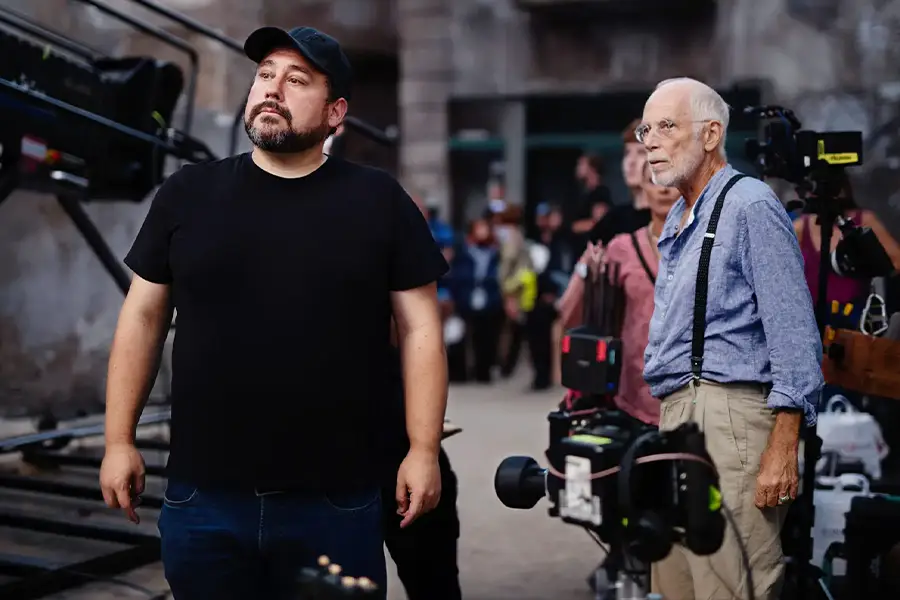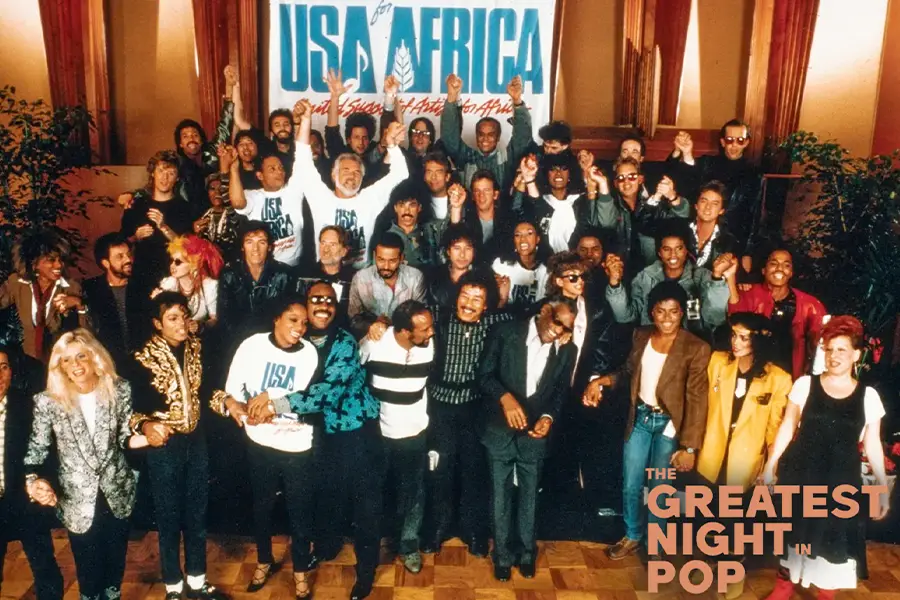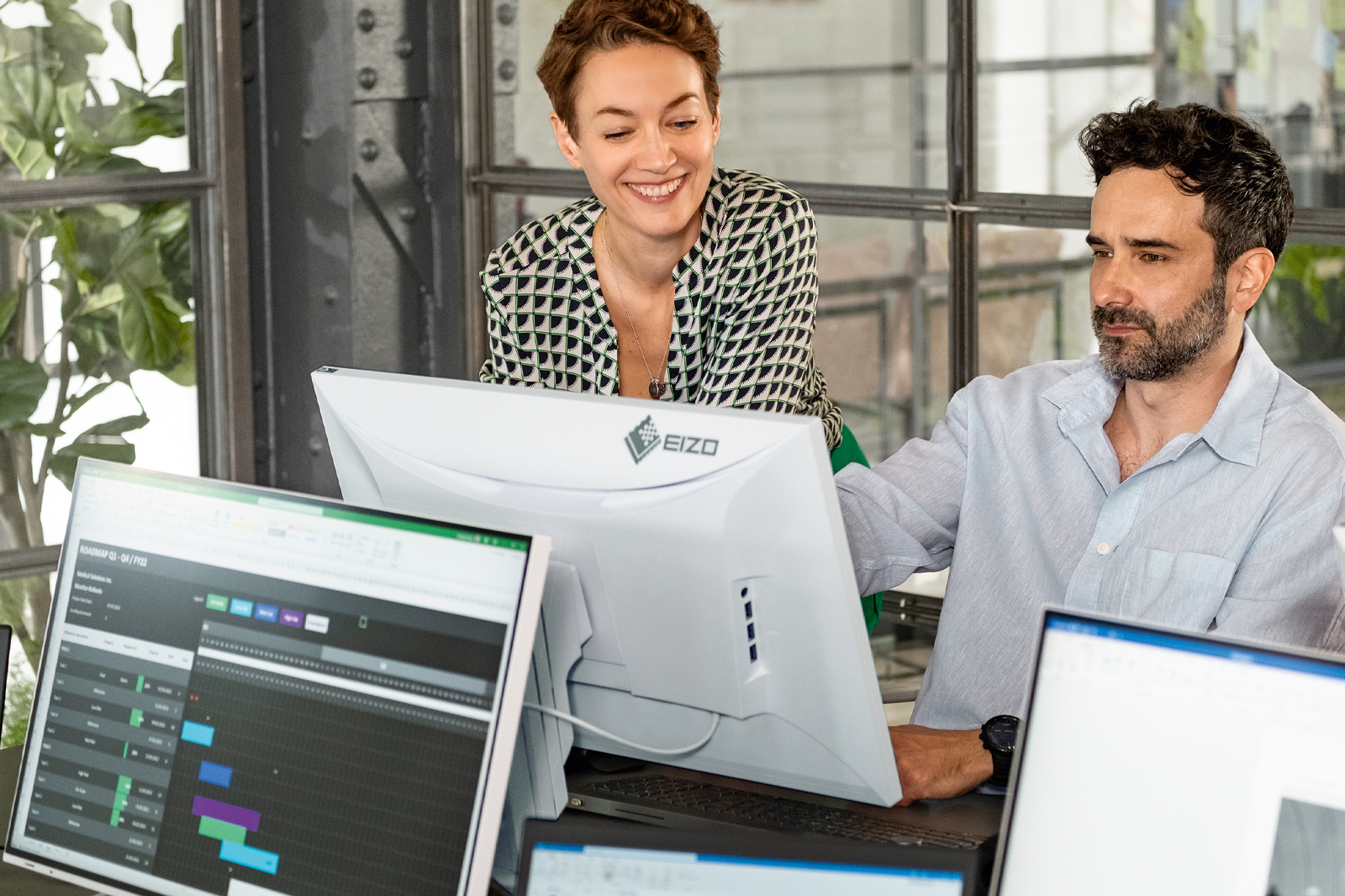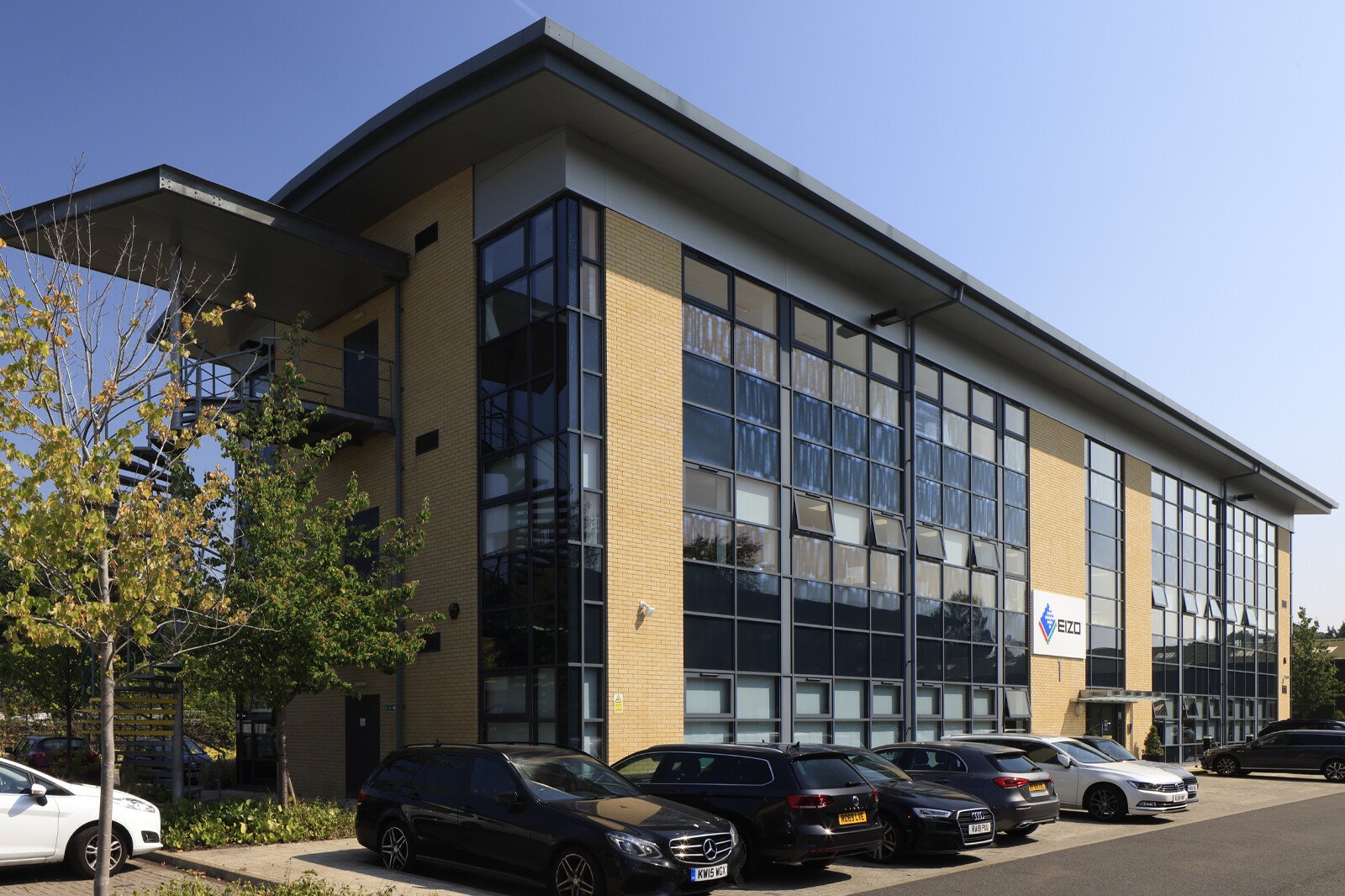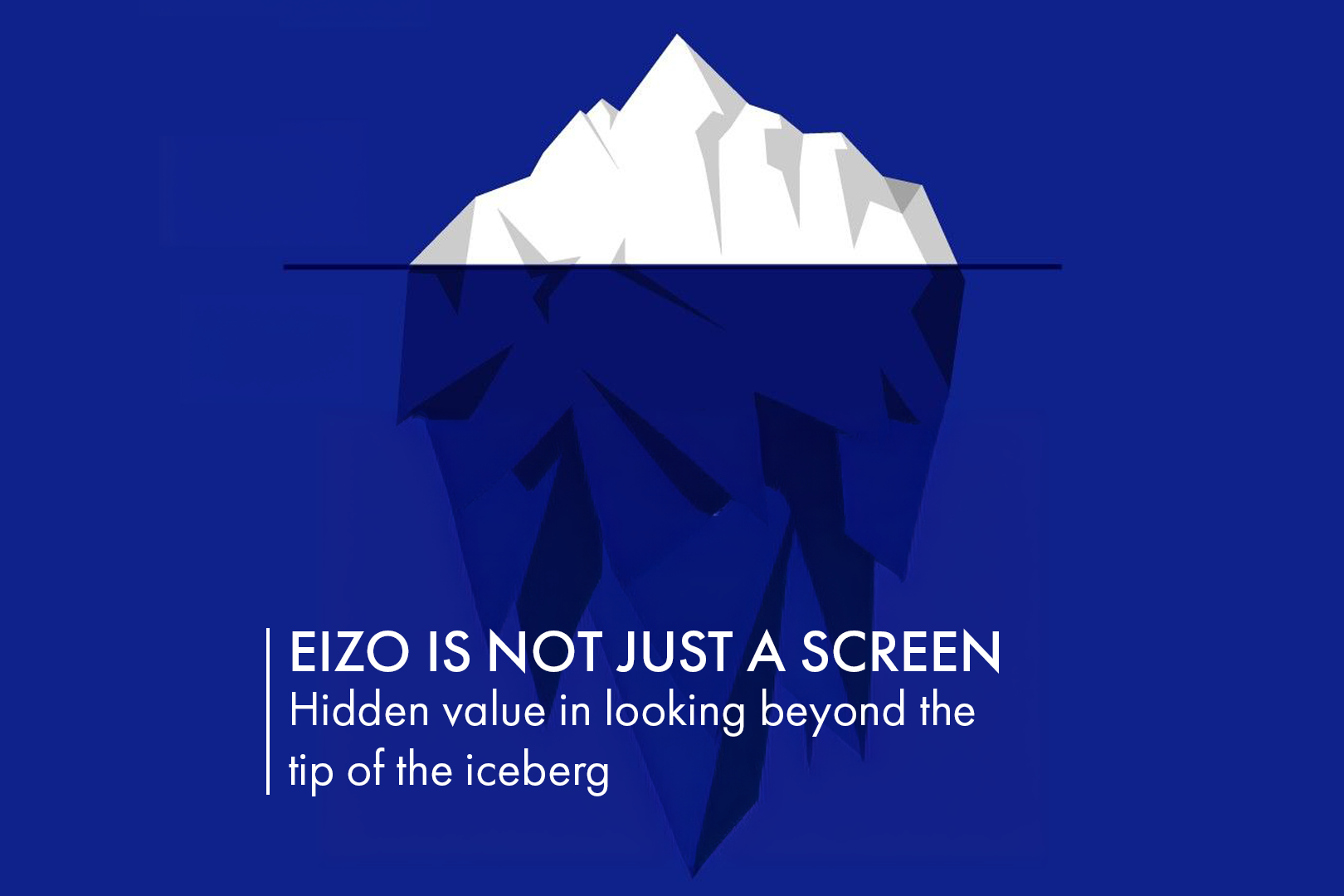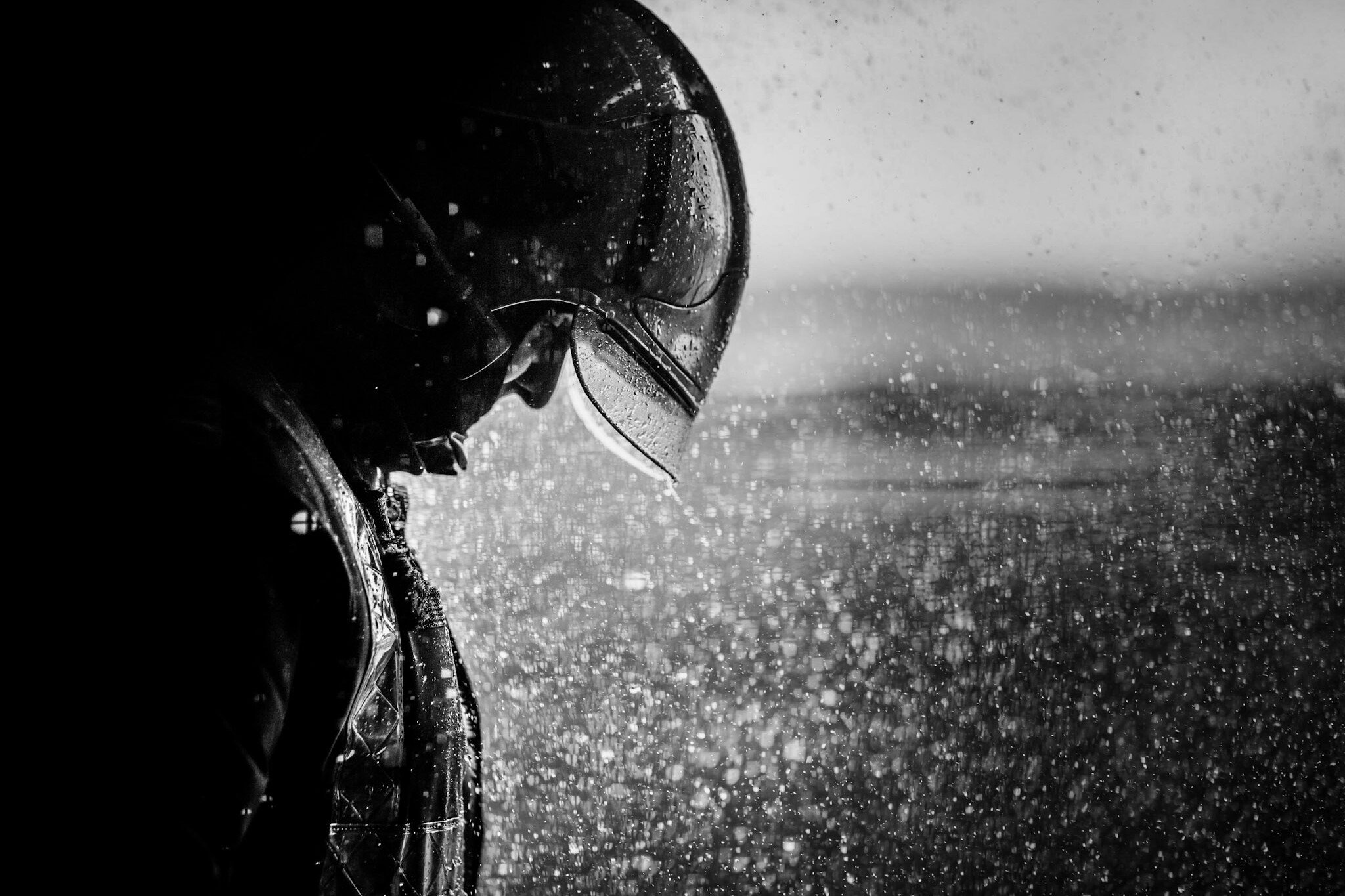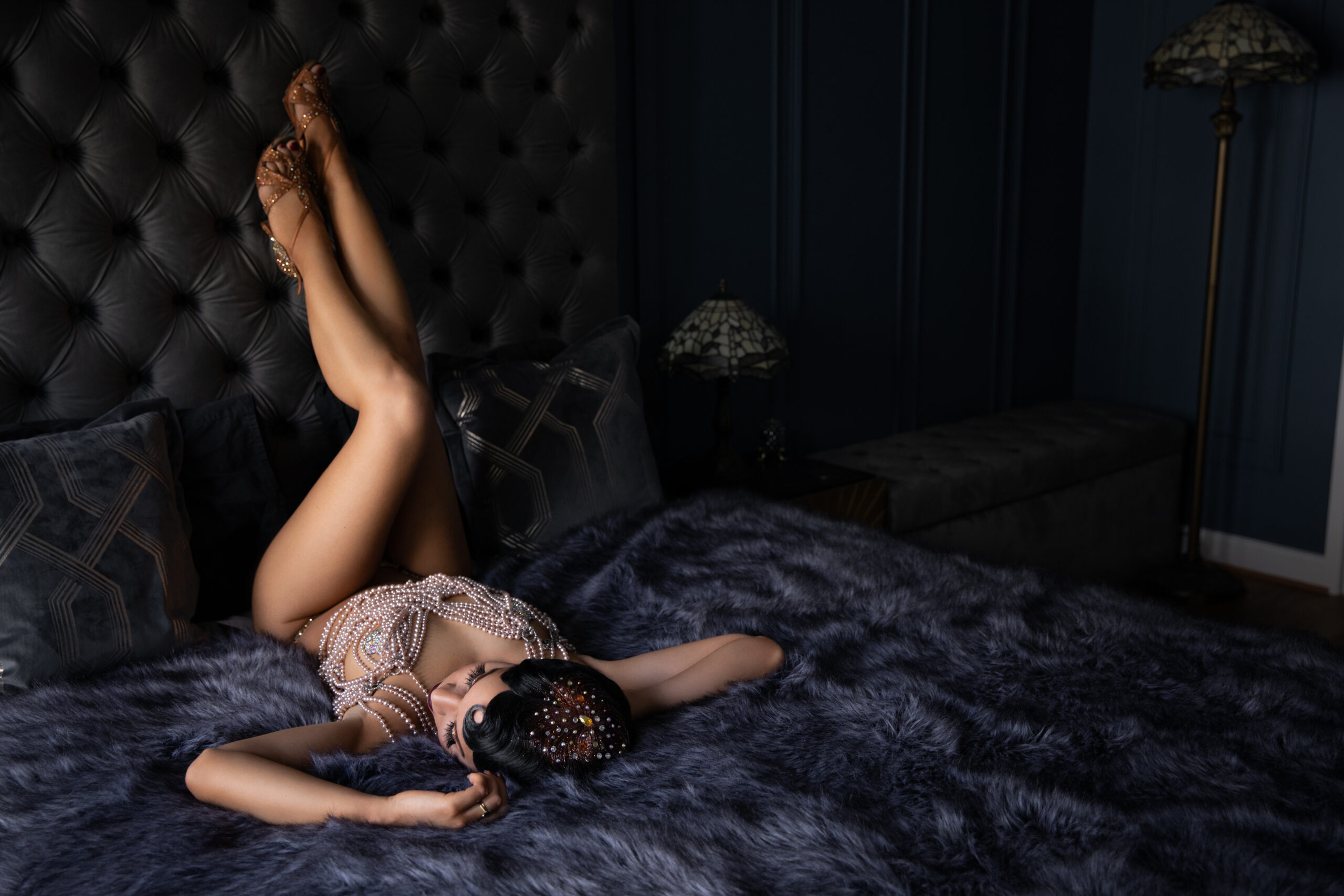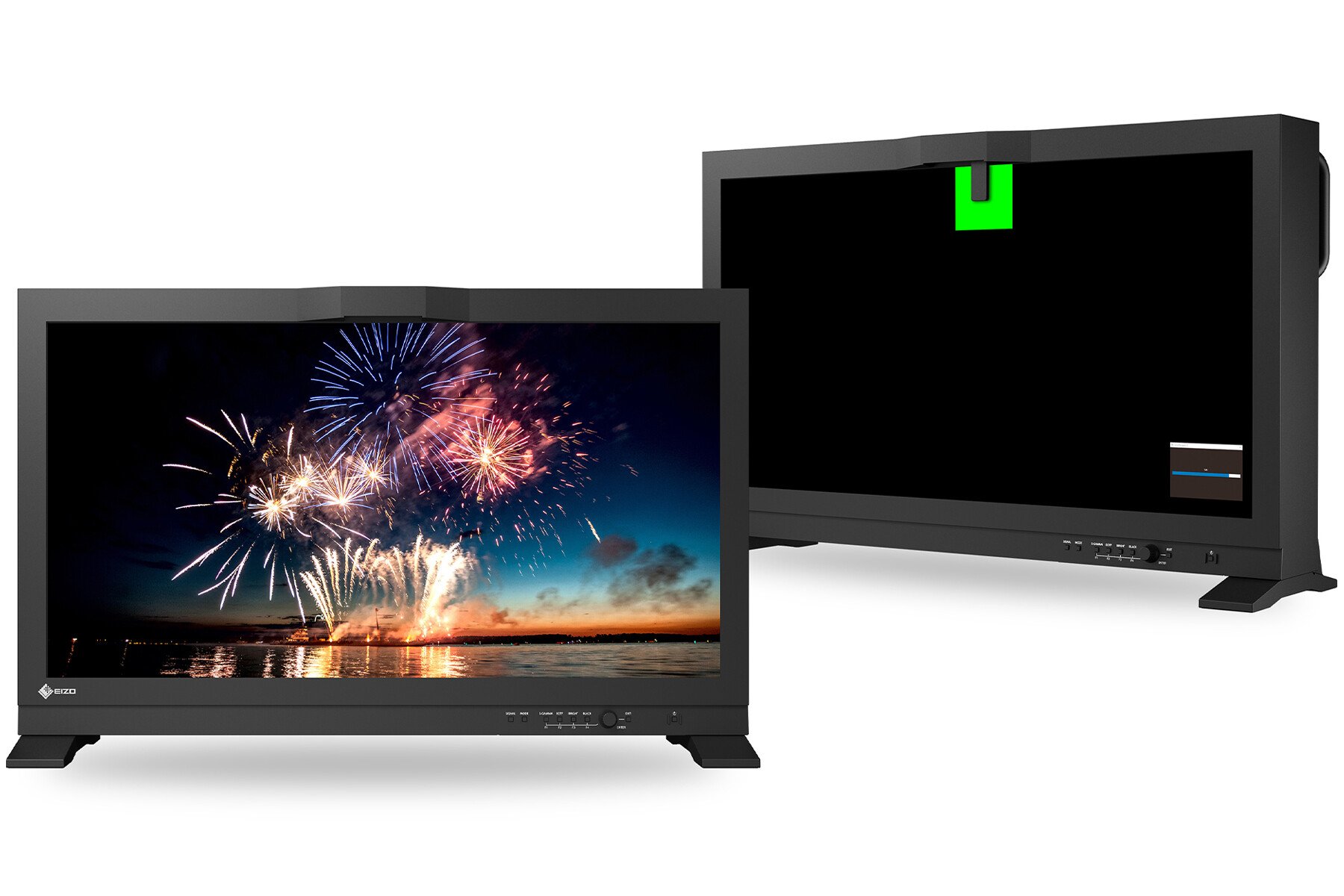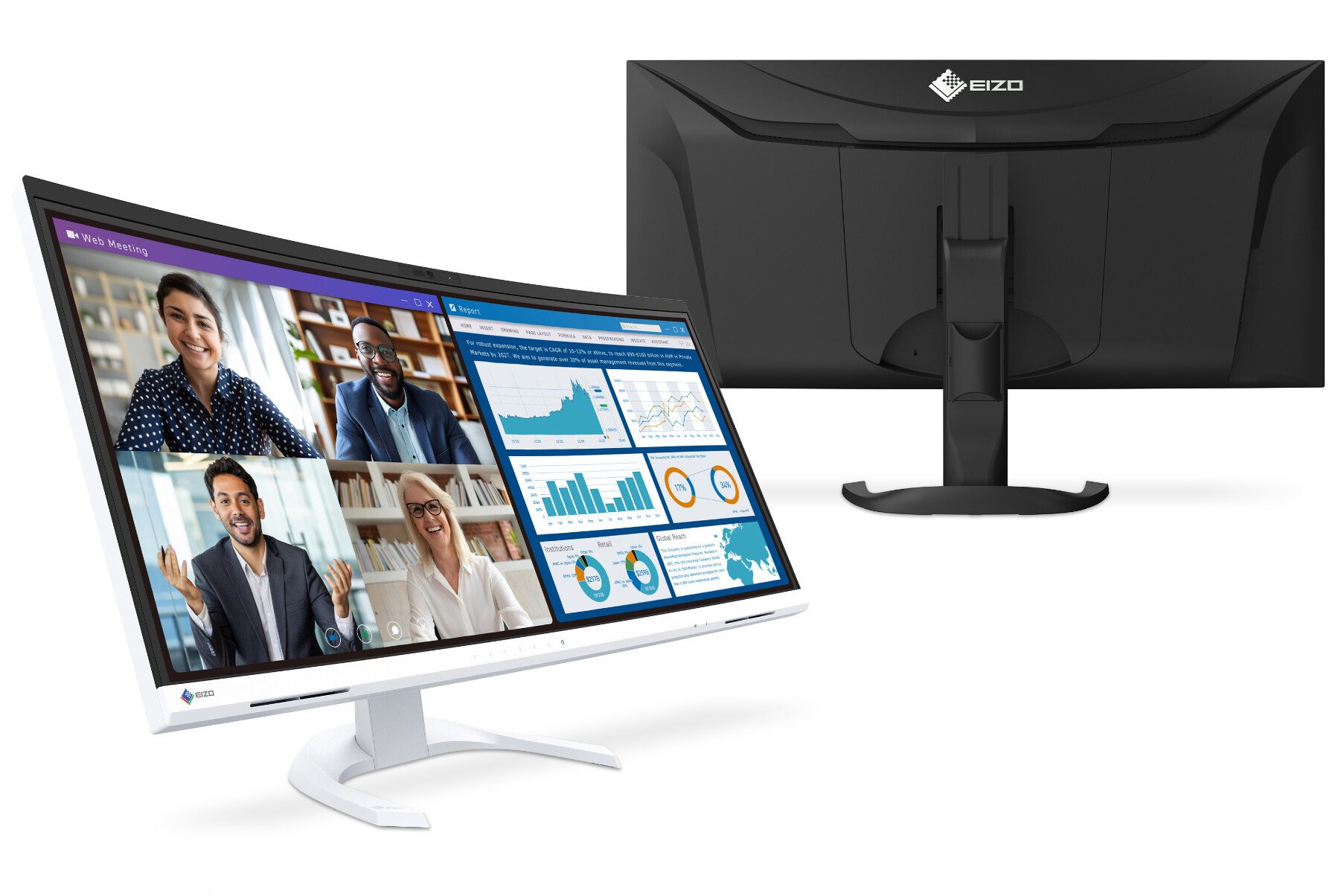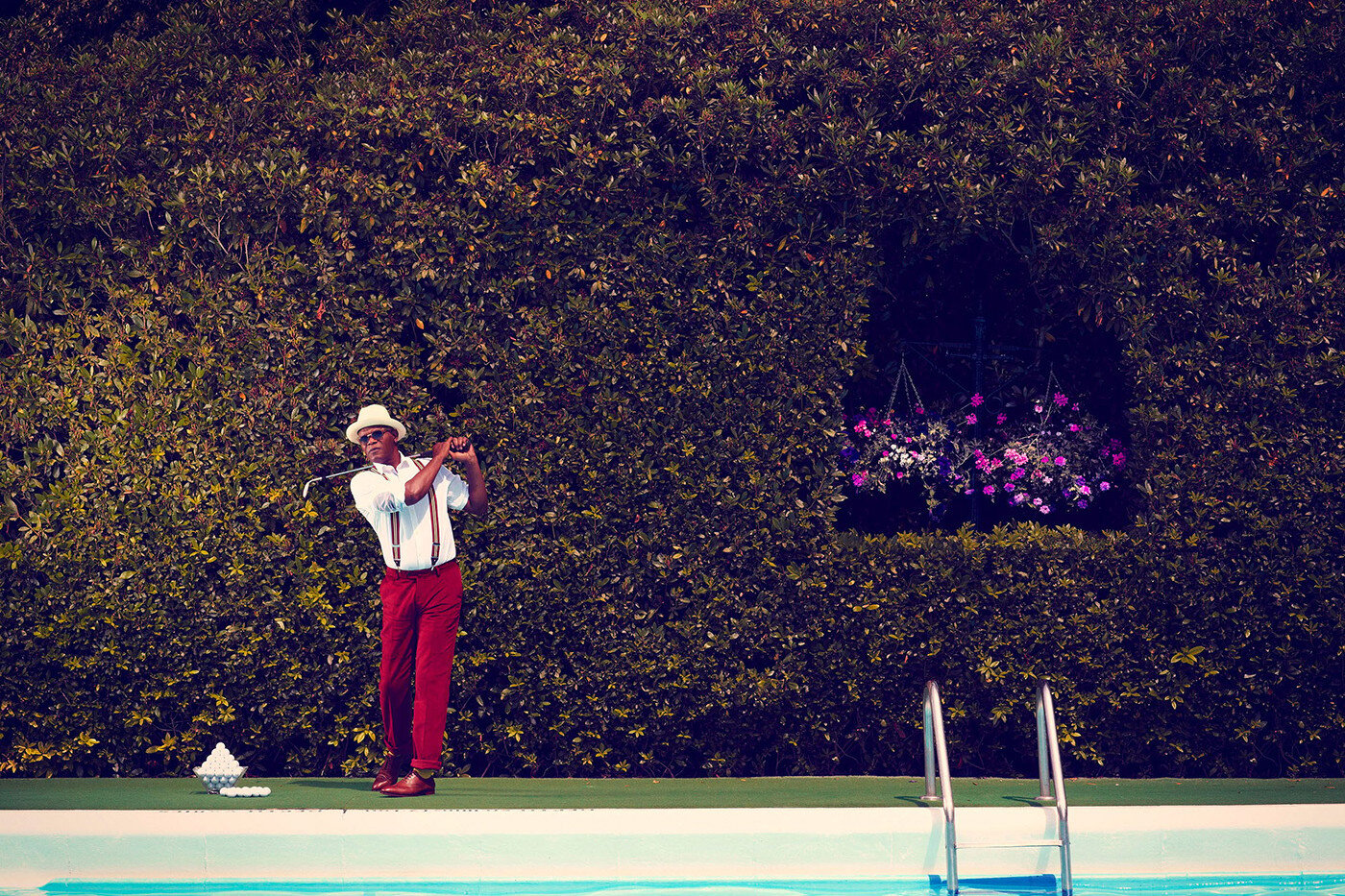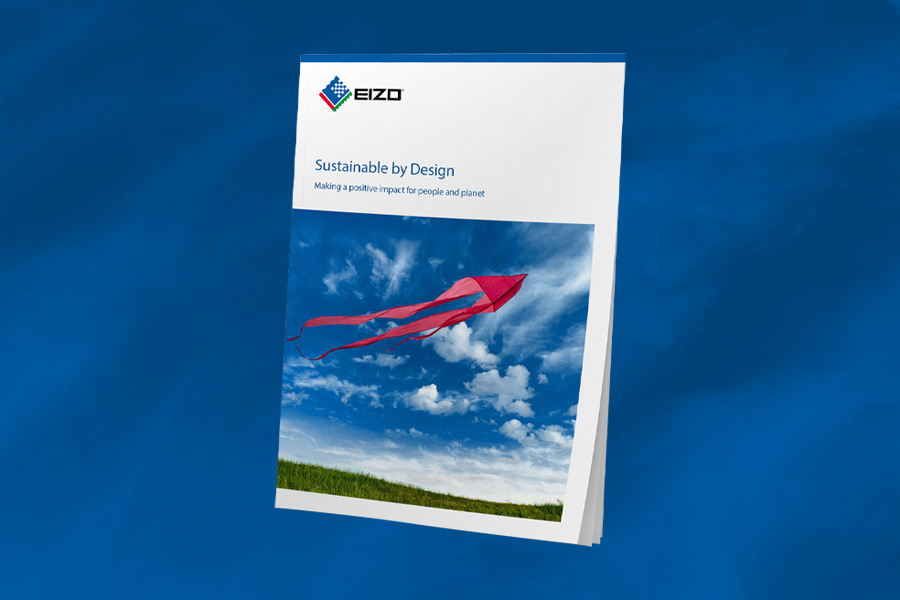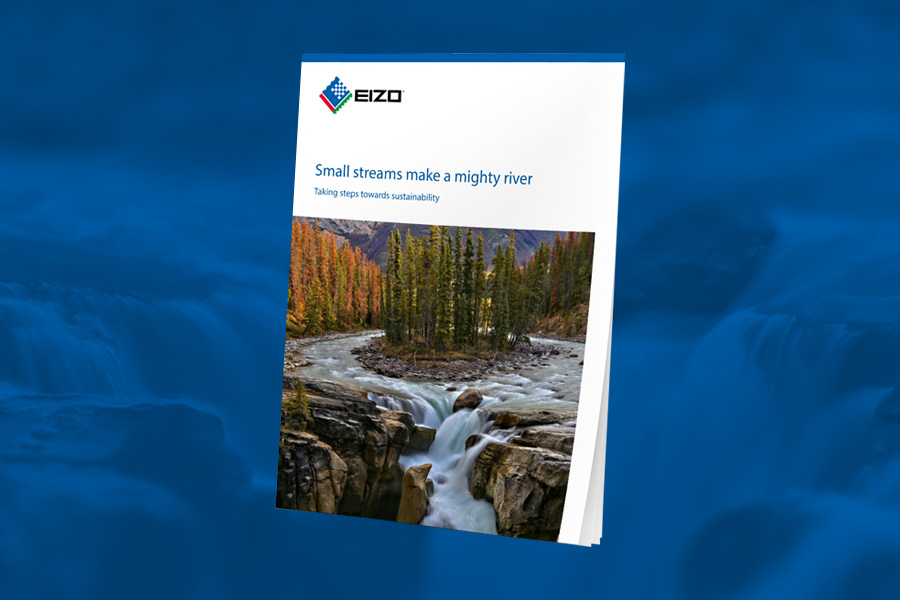EIZO Interviews Victor Perez
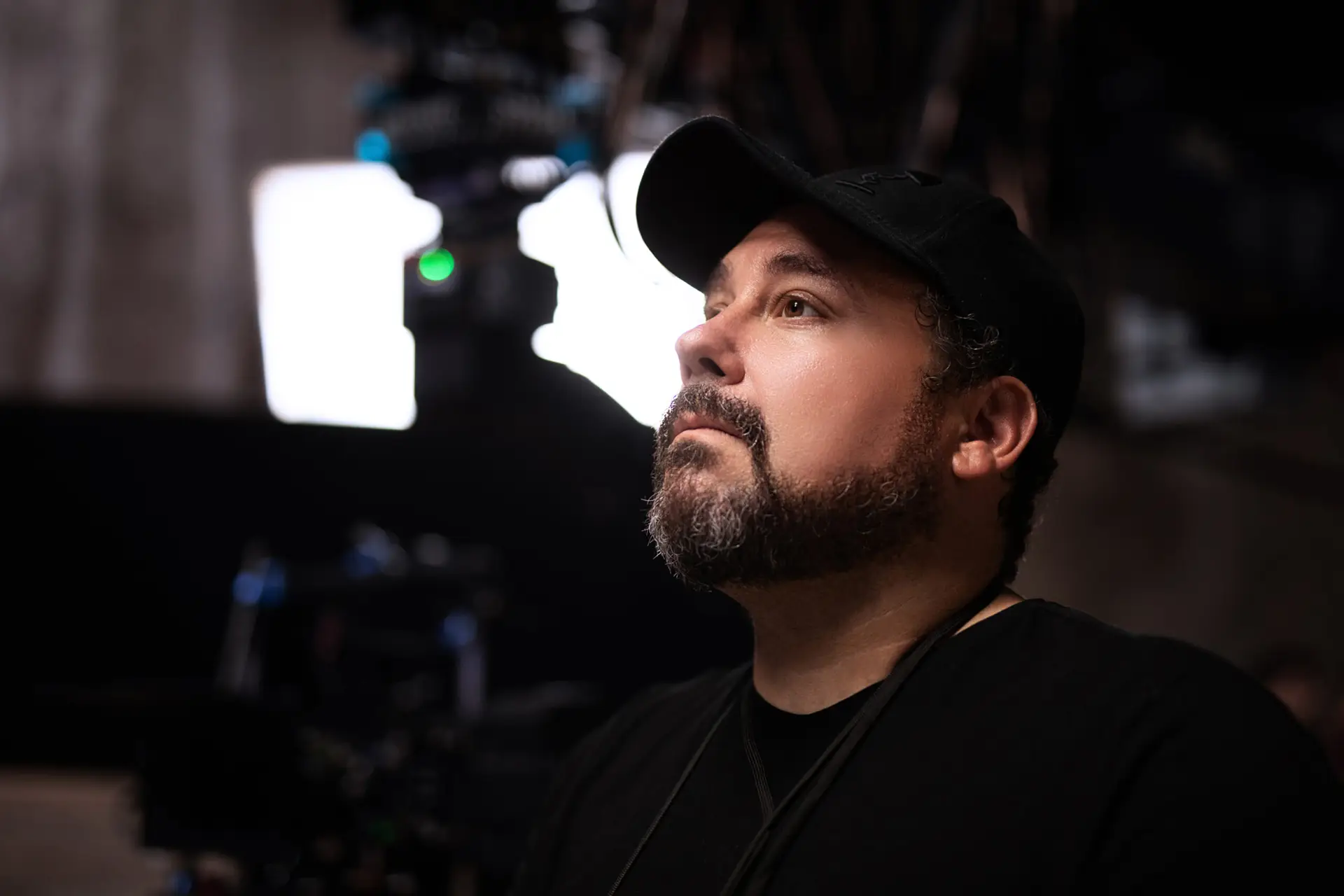
Victor Perez - Visual Effects Supervisor
In conversation with Mike Owen, Head of Marketing at EIZO UK
Since their inception movies have captivated audiences in each successive generation, a trip to the cinema is all about the experience whether this was going to see the latest blockbuster, or something a little more leftfield because of a specific actor, director or genre of film. Today we consume content in so many different ways, from the cinema to our phones, and the technology that has allowed filmmakers to tell their stories is developing all the time. There are filmmakers who embrace the latest technology and there are filmmakers who want to stay “true” to the art of filmmaking by avoiding as many of the digital add-ons that are available to them today.
The vast majority of people will invariably have a favourite film and many will be able to recognise a specific scene or a famous line from a classic movie, but beyond the director and actor the vast majority of people have no clue about the often hundreds of artists that it takes to make a film, from costume, make-up, production design to the technical departments of camera, lighting and sound, but it is often the visual effects that make up a large section of the credits of many modern films as the filmmakers become dependent on special and visual effects to bring their creative vision to life.
For many, Visual Effects are the dark arts of filmmaking, and like many of the creatives in the film making process, they do it away from the spotlight of the media, so I was honoured to be able to sit down with Visual Effects artist, supervisor and film director Victor Perez. Victor was a Visual Effects artist on films such as Christopher Nolan’s The Dark Knight Rises, Gareth Edwards’ Rogue One: A Star Wars Story and the BAFTA award winning Harry Potter and the Deathly Hallows. I caught up with Victor in London, where he lives, to discuss his work and his love of EIZO monitors.
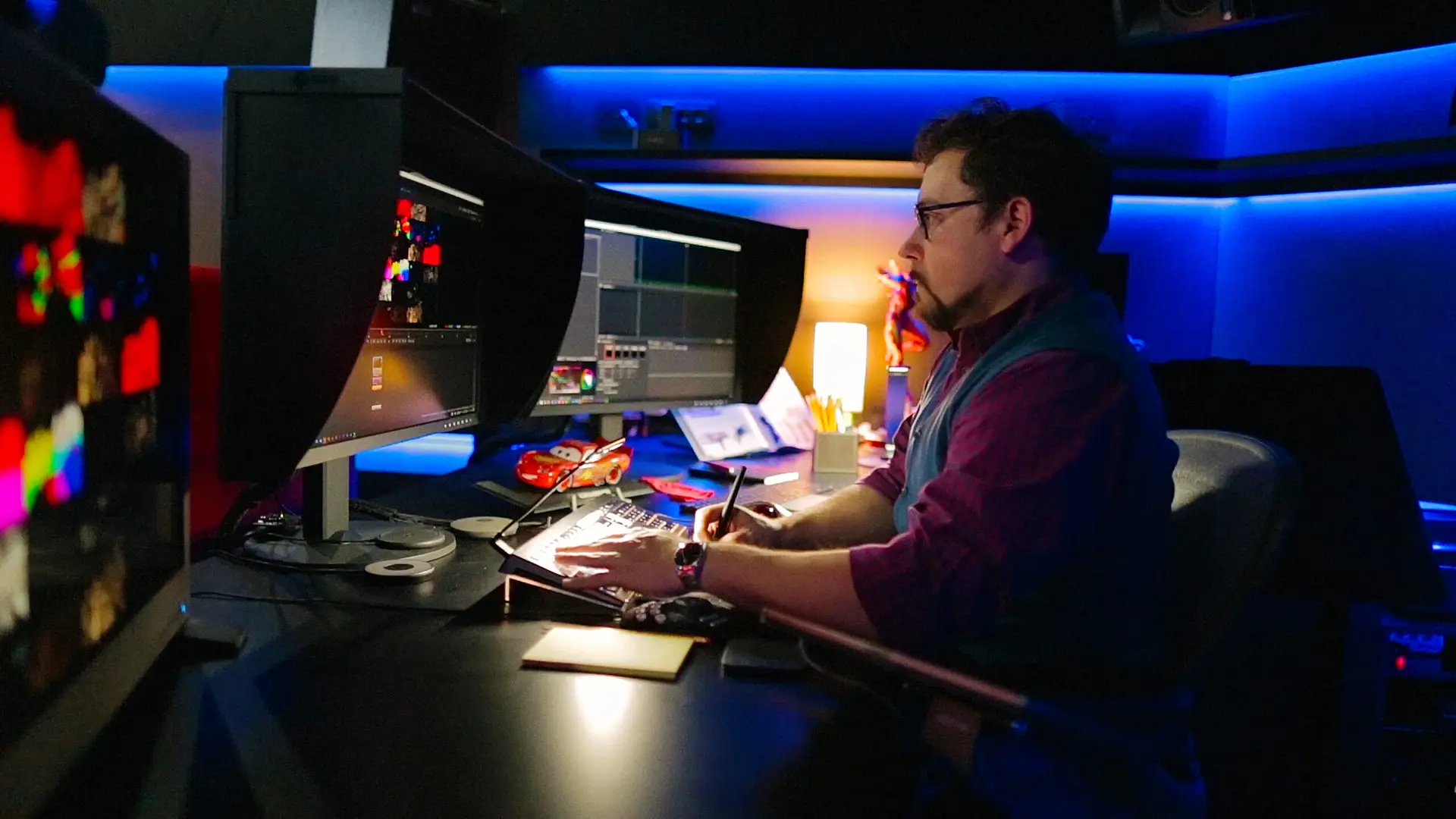
Beyond Reality
Given the fact that visual effects are often seen as a bit of a dark art in terms of filmmaking, I needed to start the conversation by understanding how Victor started towards a career in visual effects. Victor jumps straight in, “Really, that is a very interesting question, there are two parts of this story. The first one is when I was six my brother was in his early 20’s studying photography, he was passionate about that and loved visual effects. But, in the 80’s doing visual effects was impossible unless you were in the right place, and as Luke Skywalker said: ‘If there’s a bright centre to the universe, you’re on the planet that it’s farthest from.’
I was living in the countryside in Southern Spain, my brother worked with my dad in order to pay for the camera gear he bought for his studies and work as a photographer and videographer. He was crazy enough, to allow me to play with his cameras. He showed me how things worked, showed me how to shoot stop-motion animation. I discovered this world aged 6, creating my own “cartoons”. While he worked, I was at home animating things, learning to use cotton to create explosions. I was playing to make movies, finding a way of not being bored. I spent so much time playing with the camera and putting things together.
I remember spending a week during the summer to put together just 10 seconds of animation. My brother watched it, was impressed and amazed I had done this on my own. He started inspiring me, showing me how films visual effects were done – and ruining movies for me while we watched them. I always enjoyed it, and his passion, of course we watched Star Wars, he was obsessed with Star Wars. It was a game, and I was playing the filmmaker. He loved technology, he got the latest computers, no video games, just applications for CGI and image manipulation. He let me use a piece of software that came with a new scanner he bought: Photoshop 1.5, so I “played” scanning photos and altering them.
At 14, I took my work to a new printing shop and studio that opened in town, I wanted them to print my files, and when the owner saw my work, he didn’t believe I produced them myself, I was “too young”. I explained exactly how I was taking the pictures, developing and scanning the negatives, using Photoshop etc. by the end of the conversation I got a job offer as an intern. I was too young to be legally working… but I was producing more than the other artists… and teaching everybody how to use Photoshop. That was my first job, I learnt so much, about the craft, work ethics, philosophy and other aspects of being a professional artist. I was doing calibrated colour-proof printing and graphic design, but I was still playing. I went to college and after studying for a few years I moved to Italy and started studying cinematography with 3 times Academy Award® winner Vittorio Storaro.
In the last year of my course something happened that changed my life forever. On the 6th April 2009, at 3:32am in only 22 seconds an earthquake destroyed my house and erased everything I possessed. I got out of our house with my wife, right after we stepped out the door the building collapsed behind us. I was in my pyjamas, which was now all I owned, and spent several weeks living in a refugee camp. It was one of the biggest Italian earthquakes in the last 300 years with a massive death toll, I felt lucky to be alive.
It had a huge impact on me and how I approach everything in life. I was… and still am lucky enough to have good friends, and they did something unexpected: When everything was lost, they started raising money, without me knowing. They pulled together enough funds to buy me a new laptop and send me to London to try my chances as a VFX artist because they believed I could make it, that was once in a lifetime opportunity… I had nothing left to lose. I still don’t know many of the individuals who helped me, many were friends, friends of friends, and people completely unrelated that heard of my story. That left an indelible mark on me. They collected a lot of money, which gave me an opportunity.
I moved to London, and started my formal career as a visual effects artist… I was unleashed, but always preserving the same spirit from when I was a child: I was an artist having fun, and the more fun I have the better my results. I owed those who believed in me to do my best. I had to enjoy every minute of it, because it’s a gift, in so many senses. To be living in London, the “bright centre of the universe”, with all its opportunities, made me feel like a child in a candy store… and I didn’t need to wait long for the opportunity, I started work for a brand-new visual effects studio based in central London, and in less than three months I was their technical director, that studio Union VFX is very well known today. I love them to bits, and I was very happy when I saw they won a BAFTA for their outstanding work on the VFX of ‘Poor Things’. I spent one of the most joyful periods of my career and met very good friends there. I was their first artist, the first thing I did was build my own IKEA desk.
London is the place of my dreams because, it’s a city that stimulates you to grow, a meritocratic culture. I had two dreams: to work on a Batman movie; and to work with Christopher Nolan. In less than two years, I was working on a Christopher Nolan Batman movie, also working for IMAX Corporation, my dreams coming true on a single movie with the highest quality film format, the IMAX 70mm 14-perf: “The Dark Knight Rises”, it was really cool doing that movie.
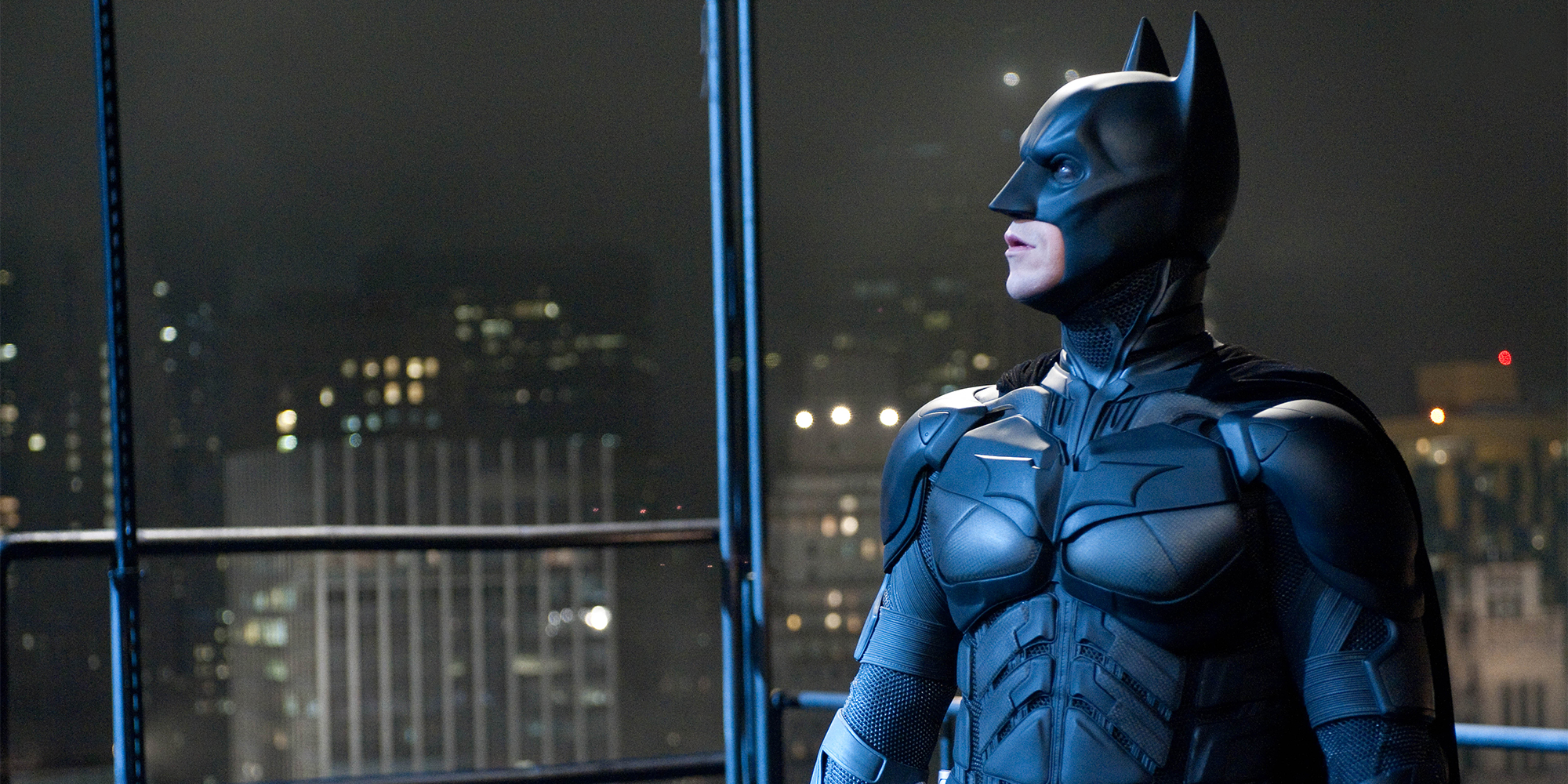
©Warner Bros
Then came, Harry Potter, Pirates of the Caribbean, Star Wars… it was that crazy! I was offered more than I could take. It was frustrating to turn down work with studios and teams I would had loved to work with, for instance Michael Bay’s “Transformers” with ILM in San Francisco, but I couldn’t make it.
After a few years of working on big blockbuster movies I decided to slow down a bit, because I wanted to find my voice as an artist, finding my own way of telling stories. So, I moved to the beautiful Italian countryside. I started writing and directing my own short films, because at the end of the day, I started as a storyteller, and I didn’t want to lose that part. Now I’m in a nice point in my career, because I feel like I can put my visual effects knowledge to the service of my stories. I like to give the audience what they want but in a way they don’t expect.”
Reality vs. Accuracy
When you work with directors like Christopher Nolan, who like to capture as much as they can in camera and those being asked to continue the legacy of a director like George Lucas who wanted to ensure his vision for Star Wars included a gritty reality rather than a polished vision of his universe, you can understand why there has been a creative alignment between Victor and some of the big projects he has been a part of. Victor has spoken about his desire to bring accuracy to his work in terms of effects like steam off a hot engine in a humid environment, but the accuracy does not stop there it continues throughout the entire workflow. Victor elaborates “As a VFX Supervisor, it’s important, to transfer creative ideas, to use the same empirical methodology. For instance, there are different tools for reviewing shots, but the most critical question of the review process is: “Do you see what I see?”
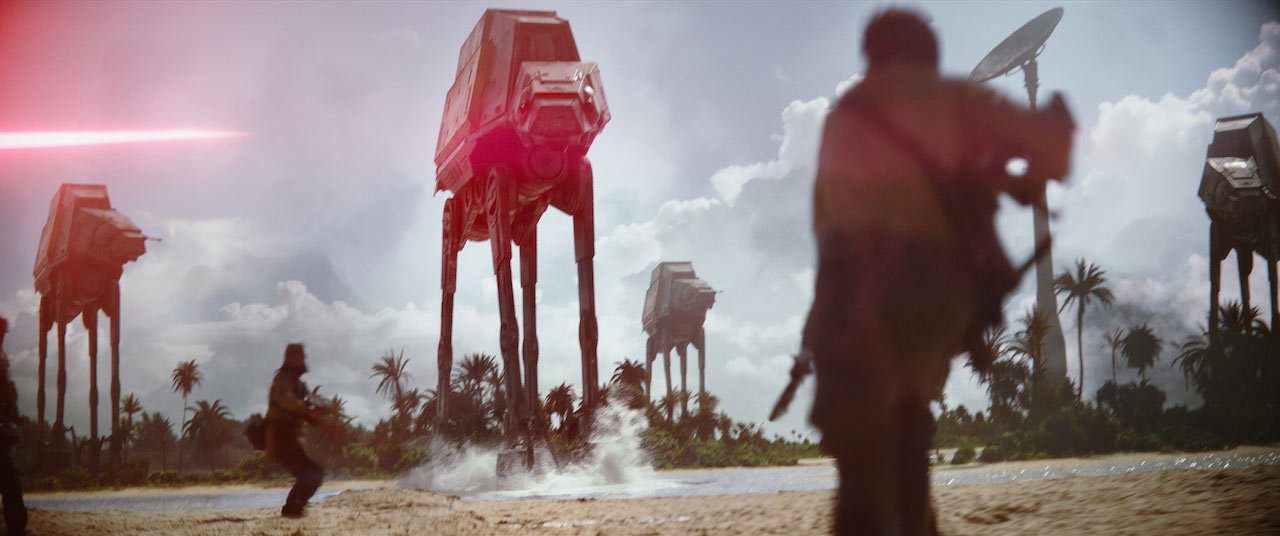
©Lucasfilm
I want to verify the screen, monitor or projector that my collaborators are using to discuss the shots to be sure of two things: firstly, that the display capabilities are enough for a critical evaluation of the image; and secondly, that the colour management and calibration are aligned to the specs of the project. Without that certainty the review process cannot be accurate. Maybe, I can see the image correctly, but others are going to see more blue, or the greys are not going to be neutral. This problem is so relevant especially when you are working remotely or with facilities in different locations or even different countries. If the image is not displayed correctly, you might be inadvertently trying to compensate for monitor artefacts by destroying the image, or even worse the image is presenting defects you are not able to see because of the limitations of your monitor.
With an inaccurate display you can find yourself in an unpleasant situation, such as, someone saying: “this is too red, I want it more blue”, and the other replying: “but this is already too blue”… from their own points of view they are both right, this is a nightmare. Colour management isn’t an opinion, you need professional tools to make professional considerations, in a colour accurate and consistent environment to preserve the artistic intent, anything else is just plainly wrong. You can be in the same room, or you can be on opposite sides of the planet, but we need to be sure everyone is looking at the same picture in the same way with the same creative intent. That’s why I insist we calibrate regularly. I want to see and verify the display they are using as reference, and of course I assume the team of artists have decent monitors compliant to the colour management specs of the project… in my experience dealing with projects I’ve seen things you wouldn’t believe.
When you work with directors like Christopher Nolan, who like to capture as much as they can in camera and those being asked to continue the legacy of a director like George Lucas who wanted to ensure his vision for Star Wars included a gritty reality rather than a polished vision of his universe, you can understand why there has been a creative alignment between Victor and some of the big projects he has been a part of. Victor has spoken about his desire to bring accuracy to his work in terms of effects like steam off a hot engine in a humid environment, but the accuracy does not stop there it continues throughout the entire workflow. Victor elaborates “As a VFX Supervisor, it’s important, to transfer creative ideas, to use the same empirical methodology. For instance, there are different tools for reviewing shots, but the most critical question of the review process is: “Do you see what I see?”
I want to verify the screen, monitor or projector that my collaborators are using to discuss the shots to be sure of two things: firstly, that the display capabilities are enough for a critical evaluation of the image; and secondly, that the colour management and calibration are aligned to the specs of the project. Without that certainty the review process cannot be accurate. Maybe, I can see the image correctly, but others are going to see more blue, or the greys are not going to be neutral. This problem is so relevant especially when you are working remotely or with facilities in different locations or even different countries. If the image is not displayed correctly, you might be inadvertently trying to compensate for monitor artefacts by destroying the image, or even worse the image is presenting defects you are not able to see because of the limitations of your monitor.
With an inaccurate display you can find yourself in an unpleasant situation, such as, someone saying: “this is too red, I want it more blue”, and the other replying: “but this is already too blue”… from their own points of view they are both right, this is a nightmare. Colour management isn’t an opinion, you need professional tools to make professional considerations, in a colour accurate and consistent environment to preserve the artistic intent, anything else is just plainly wrong. You can be in the same room, or you can be on opposite sides of the planet, but we need to be sure everyone is looking at the same picture in the same way with the same creative intent. That’s why I insist we calibrate regularly. I want to see and verify the display they are using as reference, and of course I assume the team of artists have decent monitors compliant to the colour management specs of the project… in my experience dealing with projects I’ve seen things you wouldn’t believe.
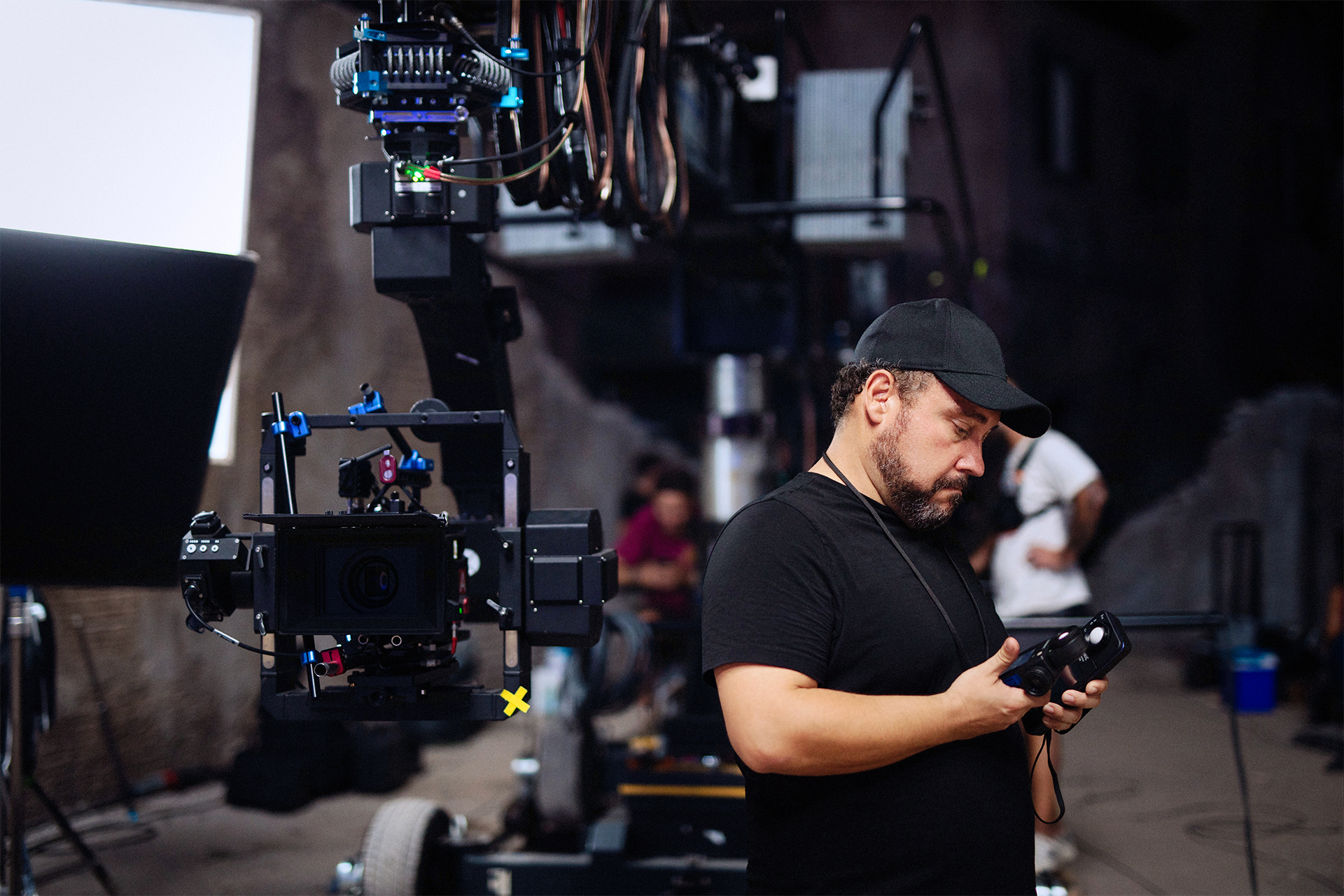
That’s why colour management and the quality of the monitors is so important for me, especially when I’m signing off something that goes to cinema, I need to be sure when I’m visualising the final shots that what I see is what the audience will get. I know what I see is what I get because I rely on the best displays and I know how to use them, so I don’t need to think about technicalities once the setup has been complete and I can focus on the fun part: creativity! That’s why I’m an artist, but I need the certainty of the technical side. I see it like breathing, something very important you do all the time, but you don’t have to focus on it, you just do it; and in order to understand how important it is to breath, even if you don’t think about it, if you stop breathing for a minute, then you’ll understand.
I cannot hesitate. I cannot indulge myself in doubt, because if something goes wrong, I’m ruining a movie, and I love movies so much, especially those I get to make. I have a responsibility. I’m a professional with strict work ethics I cannot afford to not know the process of colour management or use a monitor that is less than the best, constantly calibrated to perform at its best, and that maintenance happens without thinking about it, automatically, like a ritual. At work I don’t express my “opinions”, I get to decide if something is categorically good or bad. That’s a great power that comes with a big responsibility.
Something I love about visual effects, it’s defined by science, technology and art, hence the work is divided into two main components: the first is artistic, which is playful and creative, ruled mainly by personal taste, attitude and aesthetics; but then the other component is purely empirical, that allows you to clearly separate what is right and what is wrong. In visual effects, during parts of the process there are elements that are clearly either right or wrong, and everything is referred to the model of the rules of reality, also known as physically plausible. In creativity terms everything is theoretically possible, and nothing is “wrong”, however when we are talking about technical questions, technicalities are like maths, either right or wrong, so by ensuring the science and the technology sides are out of the equation I can focus on the artistic side, the one where nobody else can beat me at being me, my essence as an artist.
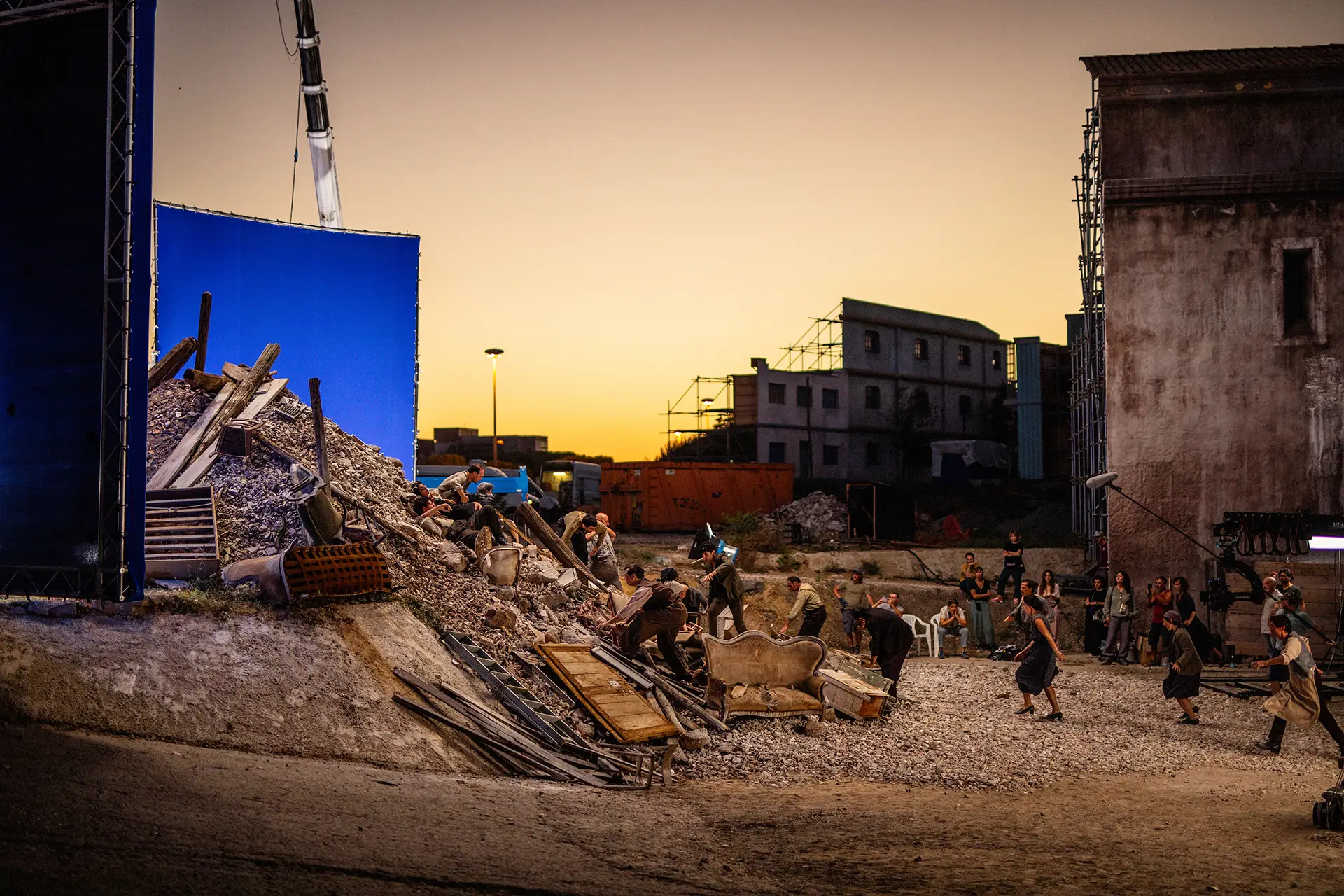
If my job is well done, nobody will notice it, that is always the goal; for my work to remain unnoticed. I want the audience to pay attention to the story not just the visuals. The art of hiding the art. Sometimes it’s frustrating, and this is a general problem in the visual effects industry: VFX are stigmatised because they are noticed when they are poorly done or when they are not serving the story. That creates the impression that VFX “ruin” movies because VFX ‘are ugly’ and ‘noticeable’. There are so many VFX that remain unnoticed, because they are well done! I believe that’s the reason for the trend of filmmakers and film marketing professionals make efforts to underline their film have no VFX… sometimes plainly lying to their audiences and that’s bad… this is like a magician saying their magic is real magic … they want us to believe in magic even if we know “real” magic doesn’t exist.
For my “magic” I need control over the image, I need to trust my eyes. Over time I realised that working with a good monitor is like a taste for fine wine. Once you have had a fine wine it is hard to go back to anything else and you are willing to pay that little bit more. Some will argue that an image is not like wine because regular members of the audience are not artists or technicians to understand the qualities of the image but that is wrong audiences, observe reality every day. Reality is the best wine available, don’t underestimate your audience and serve them bad wine. So, learning how perception works is key, but if you can’t trust your monitor, what can you trust? You can be the best artist, but without a good monitor you have power without control. The metaphor of the wine is what happens with monitors and the curve of appreciation by artists. When I started, I didn’t have the technology I have today, I didn’t understand the differences between monitors, my skills were below the abilities of the monitor to represent my precision. As soon as I started using good monitors, I started appreciating differences I never noticed before, I was not limited by technology.
In the past I worked in a couple of studios and after the first day using their monitors…I shipped my own monitors to the office… this level of intimacy for me highlights the monitor in relation to my art. I accept no compromises, my clients want the best of me, and I must give it to them. You might think a monitor can be expensive, but my clients spend millions producing their movies, so it isn’t just about my vanity as an artist, but about respect for my craft and my clients. I could have the best tools to unleash my creativity, but if I cannot trust my eyes, everything else is useless. I think it’s my duty to make sure the pictures I create are as “perfect” as my limitations as an artist allow me to reach. I’m not going to allow a piece of hardware to limit me, I can only accept to be limited by my own imagination. I’m not going to allow any technical questions get in the way of excellence, because I respect my profession, and art is a serious business to have fun with.
Every time I watch a good movie, I leave the cinema thinking: ‘wow, that was a good movie’. By contrary when the movie wasn’t good, I usually think: ‘the music was good’; or ‘the cinematography was good’; or ‘the actors were good’; or ‘the VFX are good’, only if the VFX were meant to be seen! As soon as you identify individual elements it means you were not immersed in the story, the suspension of the disbelief didn’t happen, so you were observing the art of the movie, the individual building blocks, virtuosity… instead of just being told a story.
Those are two different experiences. You can like or dislike a story and still enjoy the movie. But if the film doesn’t work, you simply haven’t been entertained, and in the end that’s what movies are made for. A film like “Back to the Future”, the result is way more than the sum of the elements, you end the movie with the feeling of completion of a journey though time with Marty McFly, you feel good: “we made it, we are back in 1985!”. When a story is well done you forget that there were people crafting every single element to make the movie, that is the magic trick. We work so hard for you to believe the story even while knowing it isn’t real, but what you feel is 100% real. I want people to love the story, to remember the experience… and, why not, to believe in magic.”
In Part 2 of this interview Victor provides insight for his desire to make the un-real feel realistic.
People talk about the magic of the movies, and there is no doubt that Victor and the VFX teams around the world help to build and define the magic of their worlds on EIZO monitors. Victor has been using an EIZO ColorEdge PROMINENCE monitor as part of his set up, click to learn more about the ColorEdge PROMIENCE CG1 and entire EIZO ColorEdge range.
Best Photo Editing Software in 2025
Discover the best photo editing software for your photography style – from Photoshop and Lightroom to Capture One, Affinity, DxO and Luminar Neo.
Why monitor calibration matters
Monitor calibration is essential for photographers, videographers and content creators who want accurate colour and brightness from screen to print or online.
EIZO Interviews Ellie Rothnie – Wildlife Photographer and Canon Ambassador
Award-winning photographer, Canon Ambassador and EIZO User Ellie Rothnie, talks about her journey as a professional photographer and top tips from her journey.
EIZO FlexScan FLT Product Showcase
Discover EIZO’s Most Energy-Efficient Monitor with World-First Class A European Energy Label.
EIZO ColorNavigator Network: Solving the Colour Managed Workflow
Unlock the full potential of your EIZO monitor with our comprehensive setup guide for the EIZO ColorNavigator Network.
EIZO Interviews Victor Perez Part 2
Victor Perez’s career is probably the most literal example of rising from the rubble of his home in Italy to working on award winning films in London.
EIZO Interviews Fifty Fifty Post Production
In conversation with Elliot Riella from Fifty Fifty Post Production about his love of EIZO and how they perfectly fit into his Autodesk Flame workflow.
EIZO FlexScan: The Best Monitors for Office Work Environments
Investing in the best monitors for office work means more than choosing a desktop monitor. It means long-term savings, improved continuity, productivity, and well-being for your organisation.
The State of Sustainability in UK IT Teams
Sustainability is front-of-mind for most of the public with 70% of people wanting to see businesses take more action on climate change.
EIZO Monitors: A Legacy of Innovation, Quality and Sustainability
Choose an EIZO monitor and do not just settle for the basic screen that normally comes as standard with the computer.
Why should I choose an EIZO monitor?
If your organisation values quality, longevity, and sustainability, you should choose an EIZO monitor.
EIZO Interviews Clive Booth
Clive Booth is a commercial photographer who has worked for many iconic luxury brands, he has photographed celebrities and shot films around the world.
EIZO Interviews Tigz Rice
Long-term EIZO user Tigz Rice, who has established herself as one of the leading empowerment photographers with an incredibly successful career shooting
EIZO ColorEdge PROMINENCE CG1 Product Showcase
EIZO releases 30.5-inch ColorEdge PROMINENCE CG1 true reference monitor with built-in calibration and advanced interfaces for efficient creation workflows.
EIZO FlexScan EV4340X Product Showcase
Discover EIZO's largest FlexScan EV4340X monitor with built-in USB Type-C dock for business professionals.
EIZO FlexScan EV3450XC Product Showcase
EIZO Unveils Its First Ultrawide, Curved Monitor with Built-In Webcam, Microphone, and USB Type-C Dock for Business Professionals.
EIZO Interviews Hamish Brown
Never heard of Hamish Brown? Well, that is probably not a surprise as it is not unusual for photographers work to be the cover image of the album or the front page of the book or magazine. If you have heard of Robbie Williams or Anthony Joshua and seen a picture of either of these British Icons, then it is more than likely that you would have seen some of Hamish’s work, but it is probably still one of the best photographers of which you have never heard.
Sustainable by Design
At EIZO believe that we have a duty to do what we can to ensure the future of our planet, so everything we do is ‘Sustainable by Design’.
Small Streams Make a Mighty River
Sustainability is becoming more important to individuals and companies alike, and if we all take a few small steps, we can all move towards a more sustainable future.
